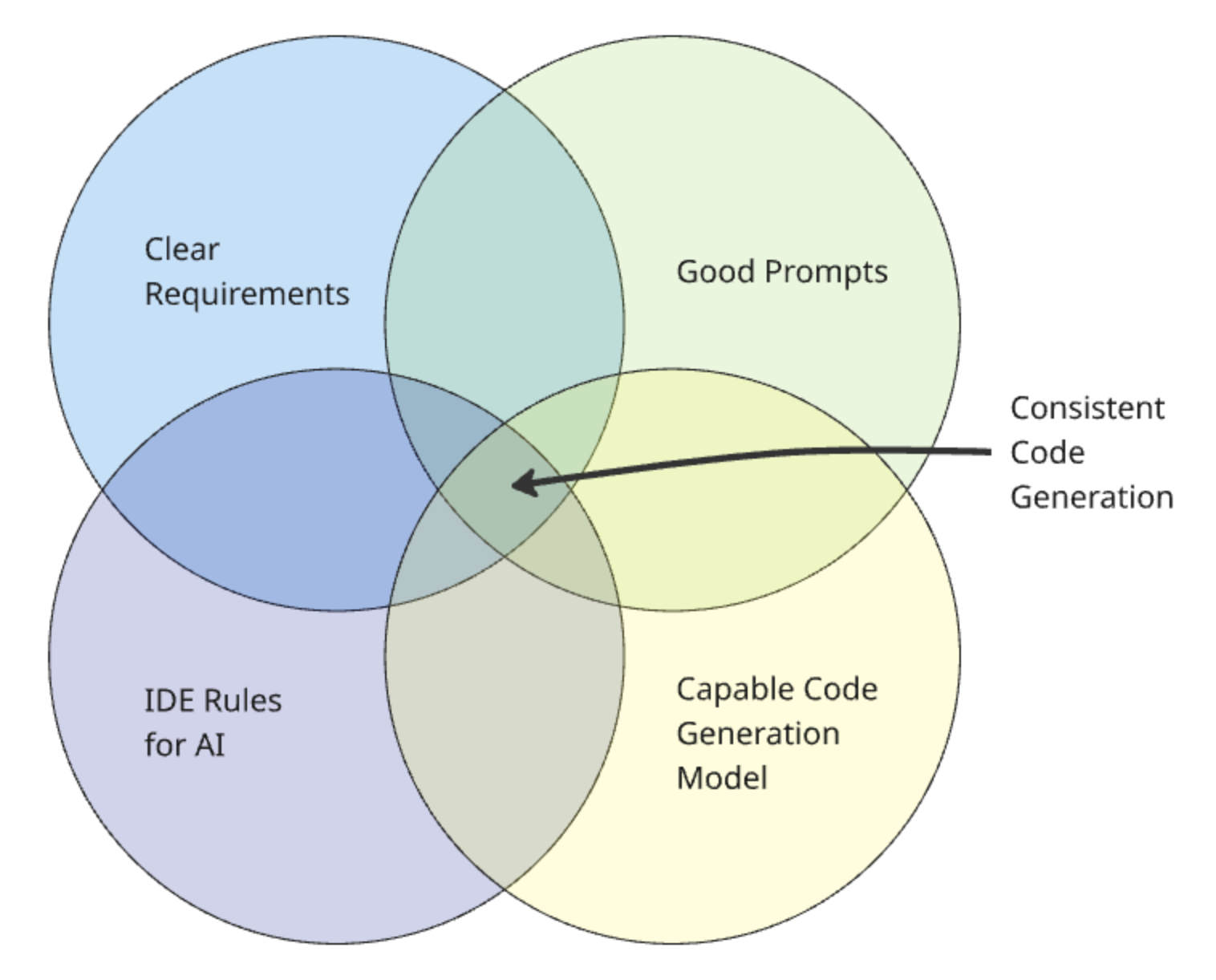The Four Pillars
To generate consistent code, four elements must come together as shown in this diagram:

Image: Venn diagram showing the intersection of elements for consistent AI code generation
The Four Elements
1. Clear Requirements
Purpose: Define the functional and technical requirements for the product or service idea you want to implement. Be detailed and clear.
Where to create: Use an advanced “thinking” chat model like Claude or ChatGPT.
Reference: Generating Requirements Workflow
2. Good Prompts
Purpose: Create clear, detailed requests for specific tasks. You can refer to the IDE rules and the requirements. However, you don’t need to repeat what’s in the rules or requirements in the prompt.
Where to create: Create prompts manually at first but then refine them using a chat model like Claude or ChatGPT.
Reference: Prompt engineering and meta prompting is explained further in the Prompting Guidance
3. Rules for AI
Purpose: AI Rules define consistent and repeatable standards, patterns and conventions across your codebase.
Where to create: Rule file formats are usually defined by the AI IDE tool. To help generate the rules themselves, use a chat model like Claude or ChatGPT.
Reference: Rules for AI
4. Capable Code Generation Model
Purpose: Use the most capable LLM model for the task you are running to get good quality results. Not all tasks need advanced models, so select the most cost-effective model that can achieve the outcome you want.
Where to create: The AI IDE tools typically let you select which model to use when prompting the LLM.
Next steps
Read and understand the detailed Prompting Guidance before you start.


